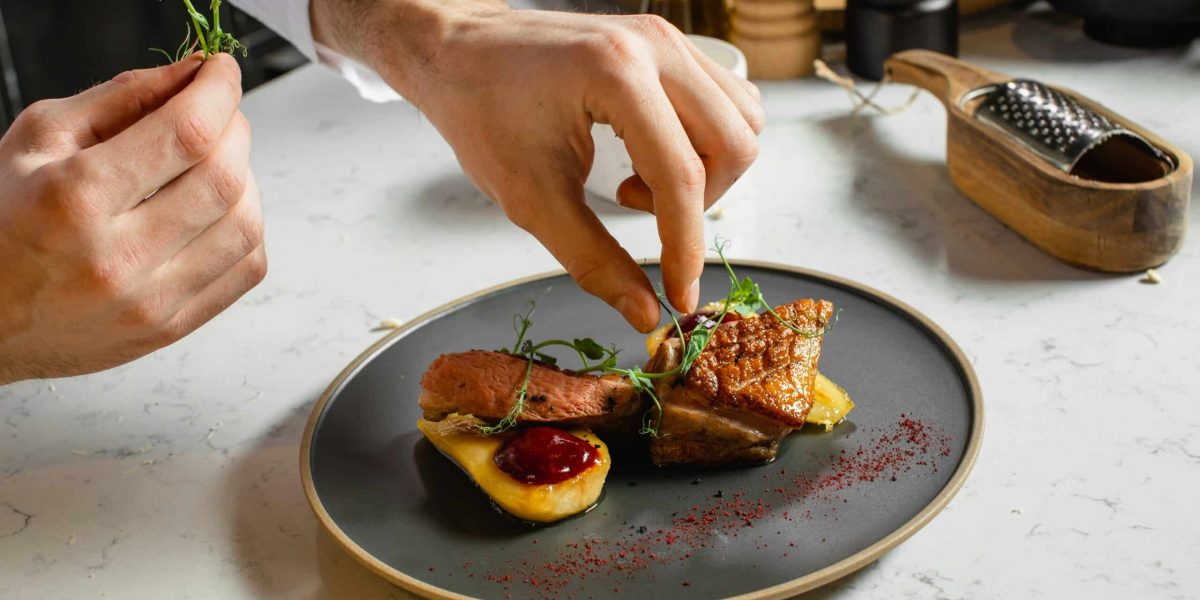The global pandemic reshaped every corner of our lives, and fine dining was no exception. From empty dining rooms to the rise of takeout services, the high-end restaurant industry faced unprecedented challenges. As the world begins to heal, the question remains: what does the future of fine dining look like? In this post-pandemic world, it’s clear that the industry is undergoing a transformation, embracing technology, sustainability, and a renewed focus on the customer experience.
How Has Fine Dining Adapted?
When the pandemic forced restaurants to close their doors, fine dining establishments had to pivot quickly. For an industry deeply rooted in in-person experiences, this shift was no small feat. Some of the most prestigious restaurants, known for their meticulous presentation and ambiance, turned to high-end takeout and delivery services. Luxury meals were carefully packaged to preserve quality, allowing diners to enjoy five-star cuisine from the comfort of their homes.
Technology also emerged as a key player. Digital menus, online reservation systems, and contactless payment methods became standard features, ensuring safety without compromising service quality. Virtual wine tastings and chef-led cooking classes grew in popularity, allowing restaurants to maintain a connection with their clientele even during lockdowns.
These adaptations weren’t just temporary solutions; they’ve redefined how restaurants operate. Going forward, flexibility and innovation will remain essential for survival in a rapidly changing landscape.
Will Technology Redefine the Dining Experience?
The future of fine dining is poised to embrace technology in ways we’ve never seen before. While face-to-face interaction will always remain a hallmark of the fine dining experience, technology offers opportunities to enhance it.
Artificial intelligence (AI) and data analytics are being used to provide personalized dining experiences. For example, AI can predict customers’ preferences based on their order history, offering tailored recommendations and creating a more curated meal. Some high-end establishments have even begun experimenting with robotic servers to handle repetitive tasks, freeing staff to focus on creating memorable interactions with guests.
Virtual reality (VR) is also making its way into the industry. Imagine dining at a restaurant while being virtually transported to the vineyards where your wine was produced or the farms where your ingredients were sourced. This immersive experience adds another layer of storytelling, creating a deeper connection between the diner and the meal.
Yet, as restaurants adopt these technologies, the challenge will be to strike a balance between innovation and tradition. The personal touch—the warm smile of a host, the sound of a cork popping—is what sets fine dining apart, and preserving these elements will be key.
What Role Will Sustainability Play?
As diners become more conscious of their environmental impact, sustainability is taking center stage in the future of fine dining. The pandemic underscored the importance of resilience, not just for businesses but for the planet as well. Many fine dining establishments are now focusing on reducing waste, sourcing locally, and highlighting seasonal ingredients.
Farm-to-table dining is expected to grow even further, with chefs working directly with farmers to ensure freshness and traceability. This not only reduces carbon footprints but also supports local communities. Menus are becoming more adaptable, changing frequently to reflect what’s in season and available locally.
Another growing trend is the emphasis on plant-based cuisine. While meat has traditionally played a starring role in fine dining, chefs are now exploring the culinary potential of vegetables, grains, and legumes. The result is innovative, flavorful dishes that appeal to both vegetarians and meat-eaters alike.
The use of sustainable packaging for takeout and delivery services is also gaining traction. Many establishments are adopting compostable or reusable containers to align with their eco-friendly goals. By embracing sustainability, fine dining restaurants are not only meeting customer demands but also playing a part in creating a more sustainable future.
How Will Customer Expectations Shape Fine Dining?
In the post-pandemic world, diners are seeking more than just good food—they want an experience. After months of isolation, people crave connection, and fine dining has the unique ability to provide it. Restaurants are responding by focusing on creating environments that feel both luxurious and welcoming.
Personalization will be a major factor in shaping the future. Guests now expect a more tailored experience, from menu customization to accommodating dietary preferences seamlessly. For example, offering gluten-free or vegan tasting menus has gone from being a niche service to an essential part of high-end hospitality.
Health and safety will also remain top priorities. Even as restrictions ease, diners want to feel confident about their safety. Enhanced hygiene measures, spacious seating arrangements, and well-ventilated spaces are likely to remain integral parts of the fine dining experience.
Diners are placing greater value on authenticity and transparency. They want to know where their food comes from, how it’s prepared, and the story behind it. Restaurants that can offer this level of insight will stand out in an increasingly competitive market.
What Lies Ahead for Fine Dining?
The pandemic has proven that the fine dining industry is resilient and adaptable. As the world moves forward, these establishments will continue to evolve, blending the old with the new. Innovation, sustainability, and customer-centered experiences will define the next era of fine dining, ensuring its relevance for years to come.
While challenges remain, the opportunities for growth are immense. By embracing change and staying true to the essence of fine dining, restaurants can create unforgettable experiences that resonate with diners long after the last bite. The future isn’t just about survival—it’s about reimagining what’s possible.








